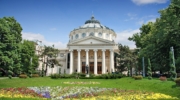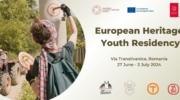Slow Food presents the artwork: ”What you didn’t know existed. Endangered food from around the world”
The artwork What you didn’t know existed. Endangered food from around the world, is launched today at the Stockholm Spritmuseum and will be visible until the 8 April. Thework officially inaugurates activities within the project Food is Culture, which is led by Slow Food with its partners Kinookus, Europa Nostra, Nova Iskra Creative Hub, Transpond AB and funded by the Creative Europe programme of the European Union, with the contribution of the Fondazione CRC di Cuneo. Artistic installations which allow the public to physically experience the displayed products, a touchscreen to virtually meet the producers and the possibility to discover the products catalogued on the Slow Food Ark of Taste website: this is the artwork that will travel all around Europe in the coming year.
Through the Food is Culture project and this artwork, Slow Food and its partners want to give a new life to the products in question, giving the public the possibility to discover them, to visit the places whence they originate, and listen to their stories. This will be made possible by interacting with some original aluminium sculptures, multimedia installations or with the project website, which records more than 5000 products from all around the world. The exhibition highlights the importance of gastronomic heritage and diversity, and the substantial risk of it being lost. Every visitor is able to print a special recipe made with some Ark of Taste products.
Alongside the artworks, at the opening visitors are invited to experience the so-called Food Tales, based on the internationally-recognized concept of the Human Library. Visitors have the possibility of “reading” migrants: sitting down one in front of the other, they can talk, discuss, and learn from each other without any border or barrier. This initiative allows migrants to describe the food traditions from their countries of origin and explain how they mixed and fused with those of their new homes. In this way, the immigrant becomes a sort of human book with a story, while the listener becomes a reader
willing to explore this story and discover a different point of view. This particular activity encourages a greater understanding of diversity and social cohesion, addressing issues of migration, coexistence, identity, and multiculturalism.
The launch of the art exhibition also marks the kick-off of the first contest organised in the frame of the project: chefs in Sweden and Italy will be asked to help safeguard and promote gastronomic cultural heritage by creating recipes inspired by the European Year of Cultural Heritage and Slow Food’s work protecting biodiversity. The chefs will be required to use traditional foods, giving priority to the Ark of Taste, Slow Food Presidia, and migrant products, in order to tell the stories of small-scale food producers and raise their profile. Three winning recipes will then be included in the multimedia installation. In
the coming year two more contests will be organised, aimed at school pupils and citizens, alongside a call to action towards decision makers. Chefs can register here
The Food is Culture project aims to make European citizens aware that food heritage is a means of expressing their belonging to Europe and better understanding the wealth and uniqueness of Europe’s cultural diversity. We must pay more attention to safeguarding and promoting our shared food heritage. Slow Food has been working on this theme for years, by cataloguing the disappearing local food heritage of Europe and of the entire world in the Ark of Taste.
The exhibition will also be displayed in Belgrade (Serbia, October 2019), Brussels (Belgium, Spring 2020) and Pollenzo (Italy, Summer 2020) but is open to requests from any museum that would be interested in hosting it.
The exhibition What you didn’t know existed: endangered food from around the world is designed in collaboration with experience designer Josefin Vargö. She is a food experience designer and an independent curator based in Stockholm, Sweden. In her experiences, she designs the nature in which knowledge and emotions are exchanged between people. Often by exploring connections between the different senses, offering moments to consider diverse ways of being. She produces work for both art commissions and commercial productions.
The exhibition is hosted by the Stockholm Spritmuseum
Spritmuseum offers a journey through the bittersweet history of alcohol in Sweden. Located in two rustic 18th-century naval buildings, it hosts three exhibition spaces, tasting rooms, a bar, restaurant, café and shop. The Spritmuseum Restaurant is run by chef Petter Nilsson, a well known name on the international avant-garde cooking scene. Petter’s cooking is based on a slow-food philosophy, always with a focus on seasonal and locally sourced ingredients. The Spritmuseum restaurant has been named one of the premier museum restaurants in the world.
The Slow Food Ark of Taste
The Ark of Taste is an online catalogue that is growing day by day, gathering nominations from people who see the flavors of their childhood disappearing, taking with them a piece of the culture and history of which they are a part. Anyone can contribute by suggesting a product or making a donation.
For more information, please visit the Ark of taste website








